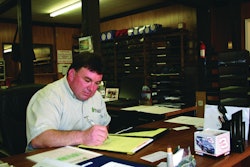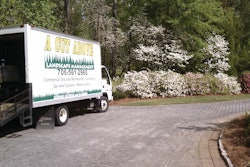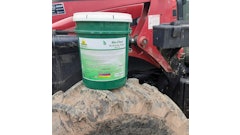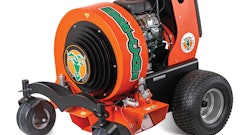
Brad Terrell is thankful that his company, A Cut Above Landscape Management based in Columbus, GA, was never really impacted by the economic slowdown; a nearby military base helped to strengthen the local economy. Business has continued to tick right along—even on the installation side. In fact, Terrell says company sales have shifted from 80/20 (maintenance/installation) to 70/30.
“We’ve always been focused on large commercial maintenance work,” Terrell points out. “The recession did hamper the installation business for a few years, so we ended up competing against many more contractors for maintenance contracts. We decided to focus more on installation when others weren’t as focused on it.
“We hired a landscape designer to help bring in more installation business,” Terrell continues. “We also hired one of our competitors who basically got tired of running his own company. But he still loved landscaping and sales. It has worked out really well.”
Wide mix of maintenance
Maintenance is still the company’s primary revenue generator, though. Diversity has been key. A Cut Above Landscape Management services commercial office and retail properties, apartment complexes, property managers, industrial sites, HOAs, universities and other institutions, government entities, and around 200 high-end residential properties.
Residential Maintenance. Terrell says he doesn’t aggressively pursue residential clients; word of mouth does it all. “Our ideal residential client is a high-level professional,” Terrell explains. “They have a really nice home, maybe even an estate, and are busy running their lives. They want a quality lawn service but don’t want to worry about any of the details.We might not even see or talk to these customers more than a few times a year, so they depend on us to manage the details for them and to solve problems in a proactive manner.” The bonus is that these types of clients often lead to larger commercial contracts. For example, servicing a hospital CEO’s property could lead to the opportunity to service the hospital itself.
Government Maintenance. This has historically been a “lowest bidder, year by year” business. Terrell and his management team are trying to change that. “We try to educate customers and point out how a longer-term (i.e. five-year) contract can actually help save the municipality money,” Terrell says. “We also talk about how an RFP (request for proposal) can be better than a simple ‘lowest bid’ scenario.” With a full-blown proposal, the municipality can get a better look at what a contractor is going to be doing over the course of the contract and how it will benefit the municipality.
A Cut Above does highway mowing, in addition to standard mowing and maintenance on several area parks.
Contracts that protect and preserve
Terrell is vigilant when it comes to contract terms for other commercial clients as well, not to mention residential accounts. The seasonality of the landscaping business is especially in play in places like Georgia and Alabama where there is no snow-removal season.
The mowing season starts in April or May and runs through October. Then it’s onto November pine straw applications and leaf cleanups. But come late-November, it’s relatively quiet through the end of February.
That’s why Terrell not only prorates contracts, but also auto-renews them. That means the price which customers pay for his services is spread out evenly over a 12-month period. Then, at the end of the 12-month period, the contract is automatically renewed for another 12 months unless the client tells Terrell that they want to cancel; A Cut Above could also decide to cancel.
“Generally speaking, our customers have been receptive to it,” Terrell relates. “It’s pretty rare for a client to want to go year by year and scrutinize everything. So it has worked out very well. I’m kind of surprised that more contractors aren’t doing it.”
The issue Terrell had was that the majority of contracts start in the busy spring/summer months. Come October when the growing season stops, some clients want to cancel their service. Since A Cut Above has already done the “heavy lifting” on a property by this point in the year, it’s important that they keep the contract going until the 12-month period has ended. “The late fall and early winter is when we’re really harvesting our profits,” Terrell points out.
Do your employees understand their mission?
This slower off-season is also when Terrell and his management team spend more time on business planning and training. “We’re still having meetings and conducting safety training throughout the busy season, but the fall is when we really focus on process improvements and strategic planning,” Terrell clarifies.
This past year, Terrell decided to conduct an exercise he’d heard about for years but never deemed a priority: develop a company mission statement, vision, and set of core values. After attending a sales seminar by industry consultant Marty Grunder earlier this year, Terrell was compelled to finally do it.
“For the past few years, I’d visit jobsites and often find that what was being done was not what we wanted,” Terrell says. “I’d see lack of efficiency, quality and safety. I finally came to the conclusion that there was a disconnect somewhere; I wasn’t going to simply blame the crews.”
Terrell remembered something he’d heard at a business conference he’d once attended. When companies are growing, there’s little time to think about things like mission statements and core values. But a growth spurt is precisely when mission statements and core values become so valuable to a company.
So Terrell wrote a company vision. He then asked his three-person management team to use that vision to create a succinct mission statement. Then, another nine employees were involved in the process of creating a set of company core values.
“We print these out and hang them all over our office and shop,” Terrell says. “We’ve even created pocket cards for employees to take with them. Now employees can make better decisions throughout the day.”





















